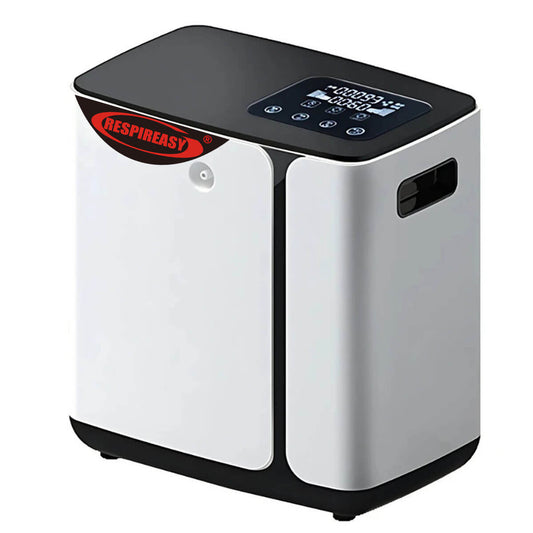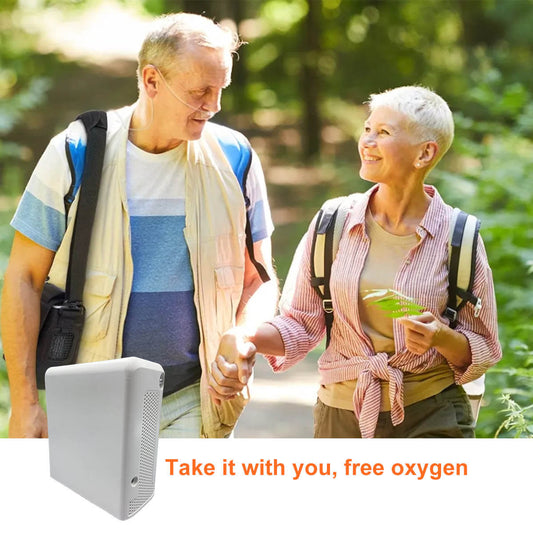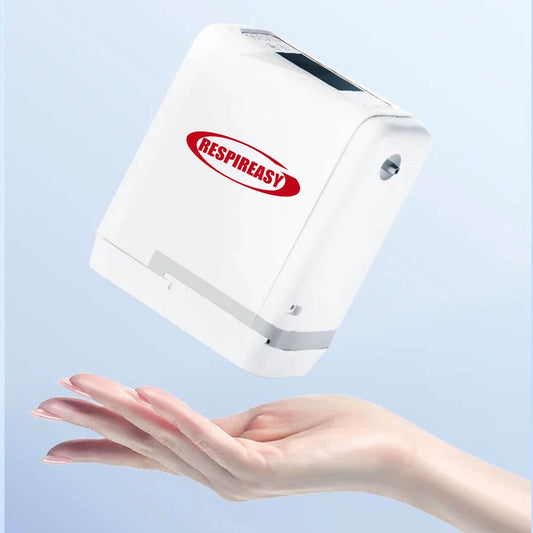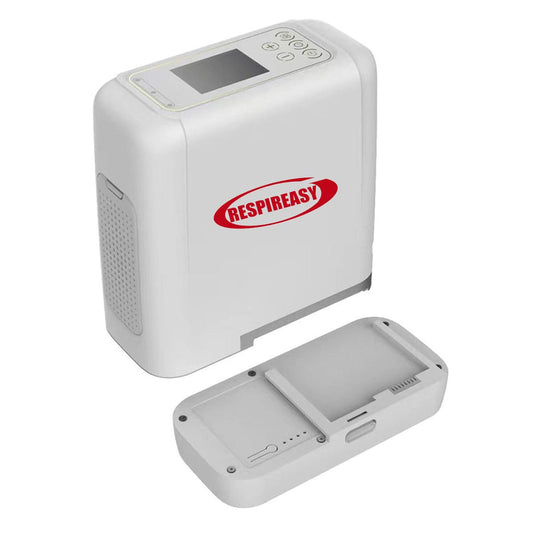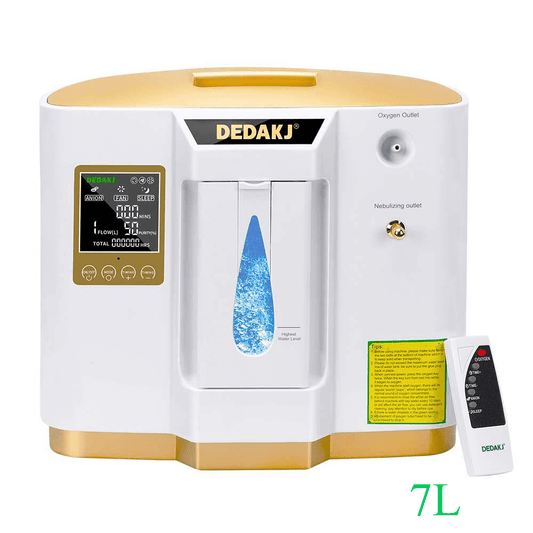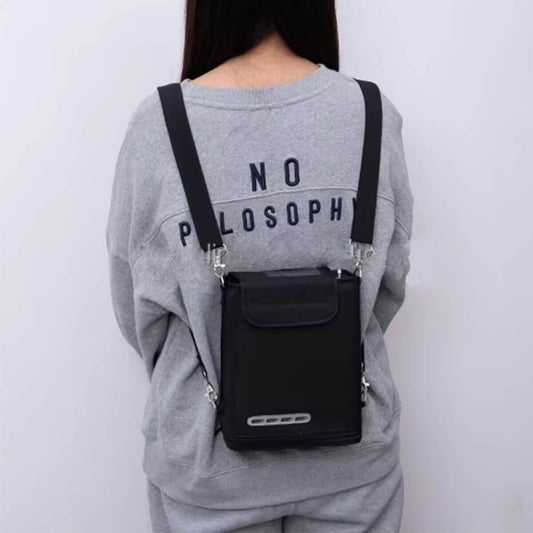What you need to know when buying a home oxygen concentrator
According to the National Bureau of Statistics, the prevalence of chronic diseases among people aged 60 and above exceeds 78%. Many patients suffer from two or more chronic diseases at the same time, especially cardiovascular diseases, neurological diseases, endocrine and other degenerative diseases of the elderly.
What is a home oxygen concentrator?
A home oxygen concentrator is a device that can extract air and remove nitrogen from it to purify oxygen. It is an ideal source of oxygen for home oxygen therapy for patients with chronic respiratory diseases or cardiovascular diseases. With the growing demand for chronic disease management and people's pursuit of high quality of life, home oxygen concentrators have entered more and more families.
With the application of a variety of innovative technologies, home oxygen concentrators can help patients easily monitor and manage their conditions, improve patients' medication compliance, thereby significantly reducing the risk of complications and reducing the need for frequent medical visits and hospitalization. Reduces pressure on medical resources.
How to scientifically choose an oxygen concentrator?
1) Brand protection
Oxygen concentrators are medical devices, and manufacturers need to obtain a medical device production license issued by the drug regulatory department. First-class professional oxygen concentrator manufacturers are the prerequisite for us to purchase reliable quality household oxygen concentrators. The oxygen concentration, input power, vibration and noise of the oxygen concentrator, the markings of the controller and instruments, external markings, enclosure sealing, safety, etc. are all things we need to pay attention to when purchasing a high-quality oxygen concentrator.
2) Technical core
The key technology of the oxygen generator lies in the oxygen supply system, which must be stable and efficient. Generally, this kind of oxygen concentrator has two characteristics. First, it uses an imported compressor, which can ensure full oxygen power and stable output.
The second is the molecular sieve oxygen production technology of the oxygen generator, which can directly obtain oxygen from the air, maintain medical concentration for a long time, and have fewer safety risks.
3) Oxygen flow
Oxygen concentrators currently on the market include health care and medical products. The main differences are the flow rate and concentration. Generally, they can be divided into different specifications such as 3L, 5L, 10L and other models based on the oxygen output per minute. Oxygen concentrators with an oxygen flow rate of 1L/min to 2L/min are generally considered health care grade, and oxygen concentrators with an oxygen flow rate of 5L/min or above are considered medical grade. Consumers can choose according to their own needs.
The choice of oxygen concentrator is not the higher the oxygen production capacity, the better. The greater the oxygen production capacity, the larger the volume and weight of the oxygen concentrator, and the noise will also increase. 3L/min or 5L/min oxygen concentrators can meet the needs of most patients for home oxygen therapy; 8L/min and 10L/min oxygen concentrators are suitable for special groups and need to be purchased under the guidance and advice of a doctor.
The choice of oxygen concentrator should also be comprehensively considered based on personal needs, including equipment appearance, volume, weight, mobility, safety, user-friendly operation interface, etc. Of course, whether it is equipped with atomization function is also one of the indicators for oxygen concentrator selection. Most patients who require home oxygen therapy may need to receive nebulized therapy at the same time.
2, How to monitor the effect of oxygen therapy?
Monitoring the effectiveness of oxygen therapy is an important part of ensuring that patients receive appropriate treatment, and requires the joint participation of medical staff and patients to ensure the safety and effectiveness of treatment.
1) Blood oxygen saturation: Monitor the patient's blood oxygen saturation through a pulse oximeter. Under normal circumstances, blood oxygen saturation should be maintained above 90%.
2) Respiratory rate: Monitor the patient's respiratory rate to evaluate the effect of oxygen therapy. Under normal circumstances, the respiratory rate of adults is 12-20 times per minute.
3) Symptom improvement: Observe whether the patient has dyspnea, fatigue, dizziness and other hypoxic symptoms.
4) Regular examinations: Patients should go to the hospital regularly for pulmonary function tests, blood gas analysis and other examinations.
In a home environment, the patient's heart rate, respiratory rate, cyanosis, consciousness, etc. should be observed after oxygen therapy. The patient's symptoms such as slowed heart rate, decreased respiratory rate, improvement of dyspnea, and remission or disappearance of cyanosis indicate that oxygen therapy is effective.
The patient's symptoms such as bradypnea and impaired consciousness indicate that the oxygen therapy effect is poor. The oxygen flow rate should be increased, the oxygen inhalation device should be replaced, and the patient should seek medical treatment promptly. Whether carbon dioxide is elevated needs to be judged based on the original disease, symptoms and blood gas analysis results.
Home Oxygen Therapy Emergency Measures
If a home oxygen therapy patient encounters an emergency, such as oxygen interruption or equipment failure, the following measures should be taken immediately:
1) Stop oxygen therapy immediately and keep the respiratory tract open.
2) Contact medical staff for help as soon as possible.
3) If possible, use backup oxygen equipment or go to the hospital for treatment.
In short, home oxygen therapy provides patients with the possibility and convenience of receiving oxygen therapy at home. In order to ensure the safety and effectiveness of oxygen therapy, we recommend that patients should perform oxygen therapy under the guidance of a doctor and follow relevant precautions and daily care.
Through reasonable home oxygen therapy, patients can effectively relieve hypoxia symptoms, improve their quality of life, delay the progression of the disease, and reduce medical costs.
TOP oxygen concentrator supplier,reliable product and service
DEDAKJ oxygen concentrator manufacturer provides various models of 1-9L home oxygen concentrators, up to 20LPM medical oxygen concentrators as well as the 2 lbs lightweight portable oxygen concentrator for traveling.
This is top-rated DEDAKJ oxygen concentrator supplier, providing both DEDAKJ 10- 20 liter medical oxygen concentrators and 1-9 liters home oxygen breathing machines, and DEDAKJ oxygen accessories parts.
For more information on oxygen concentrators, please feel free to consult us.
And you are we welcome to place the order in our official store directly.
We are operating the USA, Europe, Mexico and UK local warehouses.
Usually you can receive the parcel within 3-6 days,very fast shipping time.
More important, as the honorable oxygen concentrator supplier, we can offer 1 year quality warranty to our customers!



































